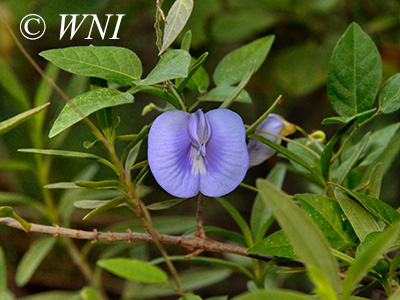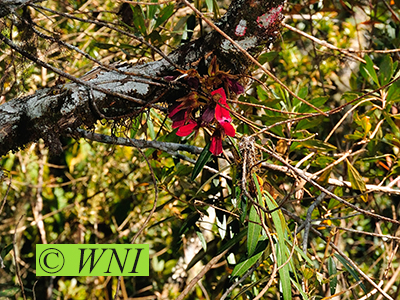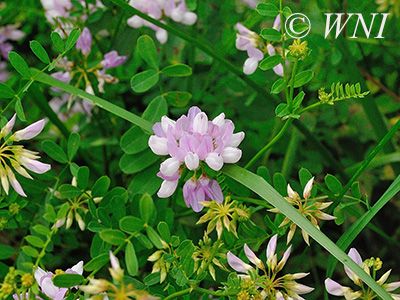| Fabaceae (Pea) |
The Fabaceae (or Leguminosae) encompass 946 genera and ca. 24,500 species (The Plant List), and are the third-largest flowering plant family, after the Asteraceae and Orchidaceae. They are distributed nearly worldwide, except Antarctica and the high Arctic; the greatest diversity is found in the tropics and subtropics, especially in the Americas and Africa. The majority of species are perennial or annual herbs, but the family also contains trees, shrubs, and vines. The leaves are pinnately compound, trifoliate, or palmate. Leaf margins are entire, rarely serrate. In many creeping species, leaflets have evolved into tendrils, twisting around a support. The flowers could be zygomorphic or actinomorphic, and are arranged in indeterminate or globose inflorescences. In many species, the upper petal is large and envelops the rest of the petals in a bud. The two adjacent petals, the wings, surround the two bottom petals; the latter are fused together. The fruit is a legume or pod, which splits open as it dries, releasing the seeds; in some species the fruit evolved into samarae, achene, drupe, etc. The Fabaceae includes a number of important agricultural species.
 |
Coastal Butterfly-Pea (Centrosema virginianum) |
|
 |
Collaea speciosa | |
 |
Crown Vetch (Securigera varia) |
|
| Unauthorized use of our images is NOT permitted. | ||
| Hotlinking or "pinning" of our images to websites is STRICTLY PROHIBITED. | ||
| Copyright © Michael Patrikeev - All Rights Reserved | ||
| |
||





